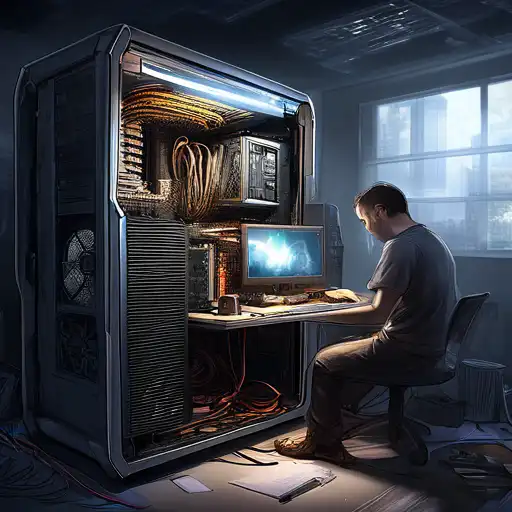Introduction to PC Building
Building your own PC can be a rewarding experience, offering both personal satisfaction and the opportunity to create a machine that perfectly fits your needs. Whether you're a gamer, a content creator, or just someone looking for a powerful workstation, this guide will walk you through the basics of assembling your own computer.
Why Build Your Own PC?
Building a PC allows you to customize every component to your specific requirements, often resulting in better performance and value than pre-built options. Plus, it's a great way to learn about how computers work.
Essential Components for Your Build
Before you start, you'll need to gather all the necessary components. Here's a list of the essential parts:
- Processor (CPU)
- Motherboard
- Memory (RAM)
- Storage (SSD/HDD)
- Graphics Card (GPU)
- Power Supply Unit (PSU)
- Case
Choosing the Right Parts
Selecting compatible components is crucial. Research each part to ensure they work well together and meet your performance expectations. Websites like PCPartPicker can help you check compatibility.
Step-by-Step Assembly Guide
Now that you have all your parts, it's time to start building. Follow these steps to assemble your PC:
- Prepare your workspace with a clean, static-free surface.
- Install the CPU onto the motherboard carefully, aligning the pins correctly.
- Add the RAM sticks into the designated slots on the motherboard.
- Mount the motherboard inside the case, securing it with screws.
- Install the storage drives in the case's drive bays.
- Insert the graphics card into the PCIe slot on the motherboard.
- Connect the power supply to all components, ensuring all cables are properly routed.
- Close the case and connect your monitor, keyboard, and mouse.
Installing the Operating System
After assembling your PC, you'll need to install an operating system. Whether you choose Windows, Linux, or another OS, make sure to have a bootable USB drive ready for installation.
Tips for First-Time Builders
Building a PC for the first time can be daunting, but these tips can help make the process smoother:
- Take your time and double-check each step.
- Watch tutorial videos if you're unsure about any part of the process.
- Keep your components' manuals handy for reference.
- Consider asking a friend with experience to help or supervise.
Maintenance and Upgrades
Once your PC is up and running, regular maintenance will keep it running smoothly. Dusting the interior and updating software are good practices. Upgrading components over time can also extend the life of your PC.
Conclusion
Building your own PC is an exciting project that can save you money and give you a deeper understanding of computer hardware. With the right preparation and patience, anyone can assemble their own custom computer. For more detailed guides on specific components, check out our technology section.
